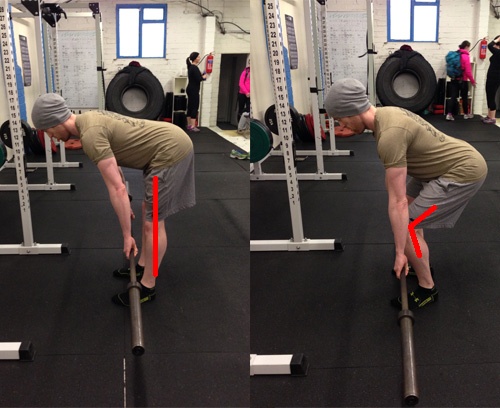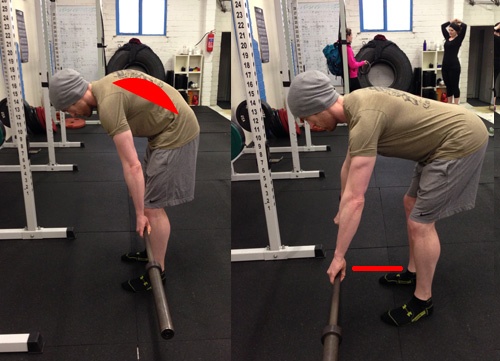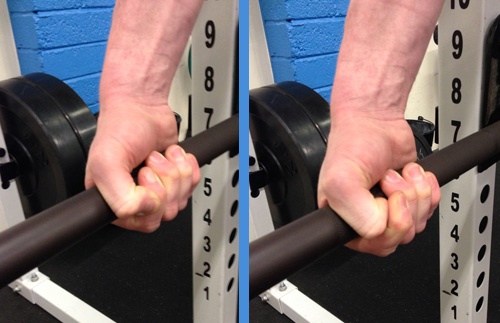The Romanian Deadlift
This article will probably be a little biased. I love the Romanian Deadlift. Unlike the conventional Deadlift, it doesn’t come with the threat of leaving me incapacitated for days after the workout.
I don’t disregard the Deadlfit at all, but due to my own training age and injury exercise history, performing it regularly comes with consequences. A lot of lucky folks can Deadlift with no ill effects whatsoever and more power to them (literally)!
This article is also not asking or suggesting that anyone replaces a Deadlift with a Romanian Deadlift. I am merely breaking down the finer points of the lift and demonstrating the how’s and why’s.
Firstly the Romanian Deadlift (RDL from here on in) is a great strength builder for the hamstrings (and also the glutes and erector spinae) – which more often than not are lagging behind quad strength in most trainees – especially females. It is a superb accessory lift for athletes that may be quad dominant or perform a lot of high bar squats / front squats or olympic lifts.
The importance of stronger hamstrings can’t be over emphasised. Quad dominance in most athletes will lead to knee issues over time. Some folks may suggest doing hamstring curls instead but I feel this has less ‘real world’ transfer, as it is an open chain movement (performed while feet aren’t on the floor) and it only focuses on knee flexion / extension as opposed to hip extension – which is a massively important athletic function.
I also favour this movement greatly for my own sport (Brazilian JiuJitsu) as it is a great posterior chain movement that can be performed to a high intensity in-season and is also great for developing grip strength.
The reason that I like to prescribe it in-season more so than conventional Deadlifting is that it is not as taxing on the nervous system, therefore you can recover from it quicker. And depending on where you are in a cycle, you can adjust the adaptation by using tempo training – i.e. slow eccentrics but you should maintain the stretch reflex for this movement (keep it fast on the way up) as this is one of the unique attributes the RDL has over Deadlifts or other back exercises.
How to perform the RDL
It really is a movement that everyone should be doing but a lot of the time I see people performing the RDL incorrectly, whether their legs are locked out or knees are too bent or more importantly the person performing the lift is losing their lumbar arch and going into forward flexion. You will know you are doing the movement right when you feel a stretch in your hamstrings.
The repetition starts in the ‘hang’ position with feet hip distance apart. Make sure to maintain good posture when taking the bar out of the rack. One common thing I see is folks taking the bar out of the rack and taking to many steps back – one step back will suffice, just enough room to perform the lift without the j-hooks getting in the way. For the most part, grip strength will be the limiting factor in this lift and if your grip starts to go, the nearer you are to put the bar back in the rack, the better.
Ideally when starting the movement, the trainee should ‘unlock the knees’ on order to push the hips back. If the knees are dead straight it restricts range of movement and can place more stress on the lower back.
Keep the weight back on the heels.
Take care not to bend the knees too much as this takes the emphasis off the hamstrings and back onto the quads. One cue I use regularly is ‘keep the shins vertical’ , as this means the knees don’t travel forward – which is always a sign of knees bending too much.
Use the lats to push the bar back into your body, if you train in the gym you will hear me talk about ‘shaving’ your knee caps with the bar – avoid letting the bar drift out in front of the shins.
Only go as low as you can maintain a lumbar arch – once you feel this start to go, come back up. The lower back must stay in extension (arched) throughout the lift – grip aside, this is the real challenge when going heavy. At the same time make sure not to over extend the lower back – a trait more common amongst female lifters.
It is worth re-emphasising that you should not lower the bar to the floor (even if flexibility allows) as you want to use the stretch reflex coming out of the bottom of the lift. If the bar rests on the floor, this stretch reflex is all but gone.
On the way back up, drive the heels into the floor, keep the bar back, don’t let the knees travel forward under the bar. Contract the Glutes at the top of the rep and watch not to lean back or over extend the lower back at the top of the lift.
Another question I am asked is if it is ok to use an alternate grip – it certainly isn’t ‘wrong’ but in my gym I will coach clean (overhand) grip as the RDL is an accessory exercise (going heavy straps can be used). I also find the hook grip more effective for this lift as it locks the bar in place better and has a better carry over to the olympic lifts.



